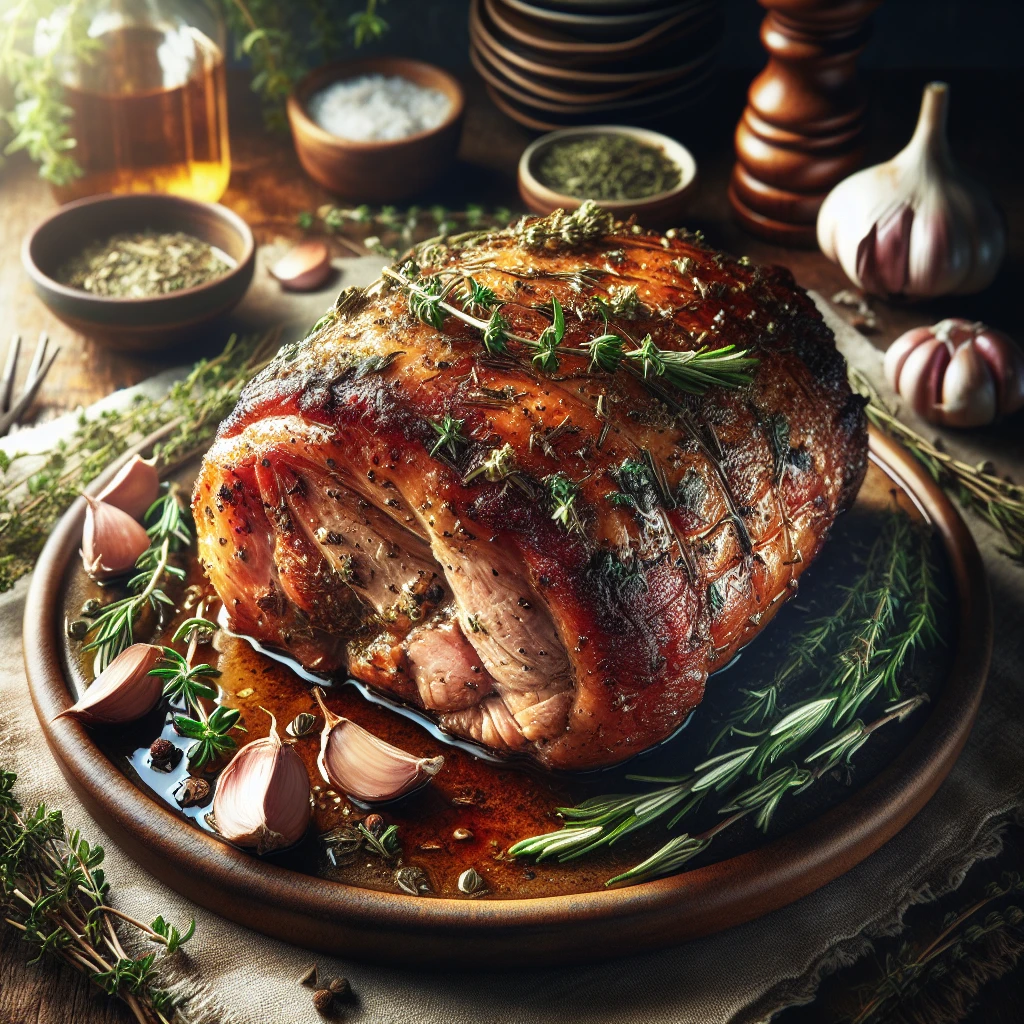
If you're looking for a hearty meal that practically cooks itself, this Herb-Infused Slow-Roasted Pork Shoulder is your answer. With a simple blend of fresh herbs, this dish transforms a humble cut of meat into a melt-in-your-mouth experience that's perfect for any occasion.
Pork shoulder: This cut is marbled with fat, which keeps the meat juicy and tender during the slow roasting process. It’s budget-friendly and perfect for slow cooking.
Olive oil: Helps the herb mixture adhere to the pork and aids in browning the exterior.
Kosher salt and black pepper: Essential for seasoning and bringing out the natural flavors of the pork.
Garlic: Adds a rich, aromatic depth to the marinade, complementing the savory herbs perfectly.
Fresh rosemary, thyme, and sage: These herbs infuse the pork with a fresh, earthy aroma that elevates the dish beyond your average roast.
Chicken broth: Keeps the pork moist during cooking and prevents it from drying out in the oven.
This pork shoulder pairs wonderfully with creamy mashed potatoes or roasted vegetables. For a lighter option, serve it with a fresh, crisp salad. You can also shred the pork and use it for tacos or sandwiches — a versatile choice for any meal.
Start by preheating your oven to 300°F. This low temperature ensures that the pork cooks slowly, breaking down the connective tissues and resulting in a tender, juicy dish.
In a small bowl, combine the olive oil, kosher salt, black pepper, minced garlic, chopped rosemary, thyme, and sage. Mix them well until you have a fragrant paste.
Rub this herbal mixture all over the pork shoulder, making sure to coat every nook and cranny. This ensures the flavors penetrate the meat thoroughly.
Place the seasoned pork shoulder into a roasting pan, then pour in the chicken broth around the meat. This broth will keep the pork moist as it roasts.
Cover the pan tightly with aluminum foil to lock in moisture and place it in the oven. Let it roast for 4 to 5 hours. Basting the pork occasionally will keep it from drying out and help build up layers of flavor.
In the final 30 minutes of cooking, remove the foil. This allows the pork to develop a beautiful, browned crust on the outside.
Once done, let the pork rest for about 20 minutes. This resting period helps the juices redistribute throughout the meat, making it easier to slice and serve.